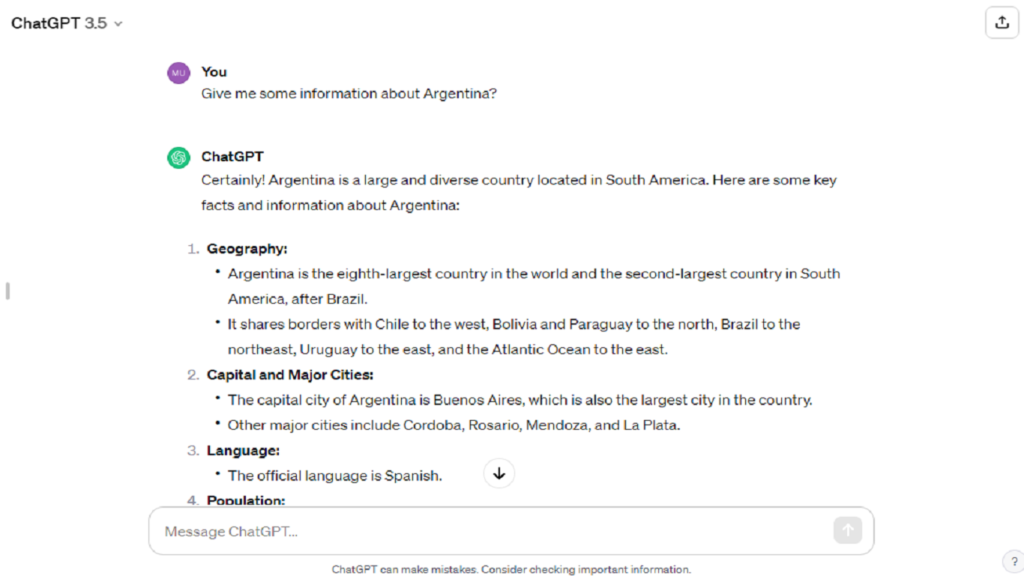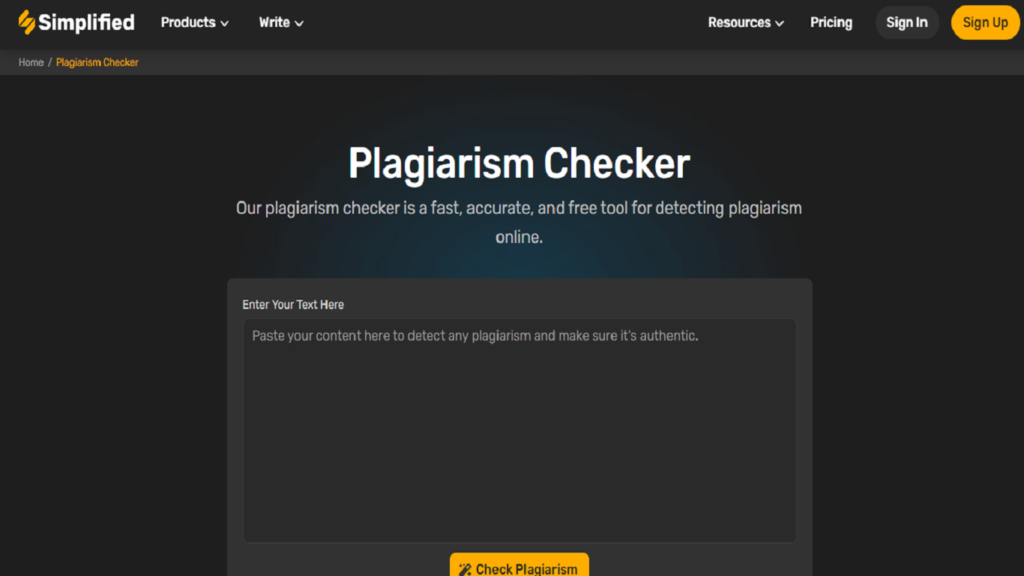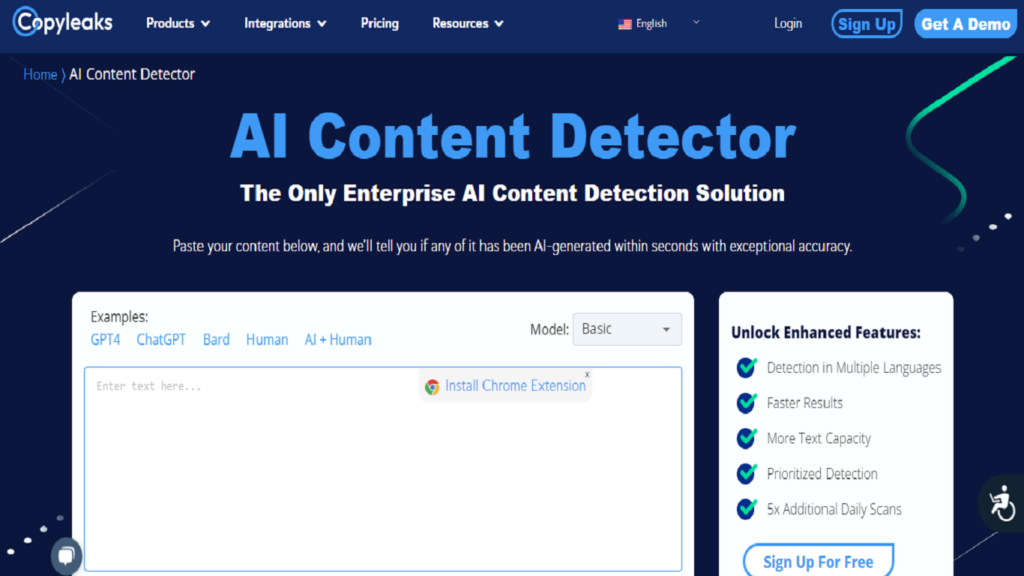Use the best AI plagiarism detectors to safeguard academic integrity by identifying ChatGPT generated content and guaranteeing originality in assignments. Though it seemed unreal a few years ago, the idea of AI taking over our jobs is gradually coming to pass.
Even though ChatGPT and other AI chatbots were first developed for lighthearted discussions, students are increasingly using AI generated content, including text copies from reliable sources, to finish school assignments.
There are ways to find instances of copied content quickly with AI powered plagiarism checkers, which can detect this kind of plagiarism. Grammarly Plagiarism Checker is unquestionably a valuable tool, but does Grammarly detect ChatGPT?
If you want to remove AI Detection and Bypass AI detectors use Undetectable AI. It can do it in one click.
Grammarly

Although Grammarly is primarily considered a grammar checking tool, it provides a straightforward and efficient method of detecting plagiarism. The application employs a range of artificial intelligence (AI) methods, such as natural language processing, deep learning, and machine learning, to improve writing and identify instances of plagiarism.
Note that Grammarly comprehensive plagiarism analysis is available only in its $12/month premium edition. Because the free version only indicates whether plagiarism has been detected, users access to thorough statistics on plagiarism is thereby limited.
Does Grammarly Detect ChatGPT?

Test 1
When we pasted the 493-word response that ChatGPT provided us with in the first test, Grammarly revealed that 18% of the text was plagiarized. The question asked, What is the difference between WordPress and Shopify?

Three of the five pages from which the text was extracted specifically discussed Shopify and WordPress.
Test 2
When we asked for information about Argentina in the second test, it took a long time to write a 396-word passage.

On the plagiarism scale, Grammarly increased by 14% this time. We did not see any results that were unique for Argentina this time. Grammarly was concerned with presenting a variety of topics on those pages.
Test 3
This time, we gave ChatGPT a 700-word essay to write about the International Space Station. It performed admirably, as Grammarly found only 7% of similarity.

Additionally, similar to the second test, not one of the websites was directly related to the International Space Station.
Test 4
ChatGPT performed poorly in the last test. The 26% plagiarism score is blatantly obvious as poor writing.
Nearly every article that was shown addressed the text primary subject. Perhaps this is the case because it was forced to provide the best option given that question could only be addressed by thorough research.
Results
Grammarly results differ depending on the subject and length of the content. The results of its plagiarism checker ranged from 7% to 26%. Grammarly plagiarism score for ChatGPT generated content increases with the amount of research-based content.
Grammarly has been shown to identify plagiarism as soon as one week after content is published, even though it may not always identify writing produced by AI.
GPTZero

GPTZero is a well-known tool that can identify ChatGPT and other AI tools. To see the results, we looked at the same text that was produced for the first three tests. It indicates whether the content was written by a human or a chatbot but does not assign a score.
According to GPTZero, AI is solely responsible for writing the content in every test. This demonstrates that although plagiarism checkers might be able to identify AI content, other tools have the ability to do so in a matter of seconds.
How to Reduce Plagiarism?

Even though ChatGPT employs vocabulary that eludes plagiarism detectors, it can nevertheless lead to issues. You need to put a human touch on your copy to make sure it is authentic. To achieve this, go over the text again, make any necessary edits, and add any missing information.
Additionally, since plagiarism can be easily detected by any plagiarism detection tool, we strongly advise conducting thorough research and including references if your text is research based.
Best AI Plagiarism Checkers

We offer efficient solutions for identifying content produced by artificial intelligence. To help you spot ChatGPT and other AI generated content, we will go over the top AI plagiarism checkers.
Simplified Plagiarism Checker

Compared to others, the Simplified AI plagiarism checker functions differently. It can look for instances of plagiarism on entire websites, as opposed to just user input. It can find instances of content theft and look for copies of a particular web page online.
Simplified plagiarism checker is primarily marketed as tools for businesses, but anyone looking to safeguard their work online can also benefit from using them. All you have to do is copy and paste the content into the writer document. A minute later, you will see comprehensive, Google style results that point out any instances of copied content.
The word count and percentage of copied content are included in the results. The service is currently free to use, but it may eventually become paywalled despite its exceptional accuracy in identifying text generated by artificial intelligence.
OpenAI Text Classifier

The company that created ChatGPT, OpenAI, has released an AI plagiarism detector known as the OpenAI Text Classifier in an effort to address the growing problem of AI generated content. This refined GPT model is intended to forecast whether a given text was composed by a human or a machine.
Artificial intelligence is a powerful tool in the fight against plagiarism because it can identify instances of content generated by the technology and take appropriate action to ensure originality and authenticity.
A variety of human and AI generated input sources were used to train the AI plagiarism checker. The tool can quickly identify instances of AI text that has been plagiarized in all kinds of written content.
OpenAI admits that the tool is still under development and not perfect. One of the greatest AI plagiarism detectors out there is this one, which is free to use but requires a minimum input of 1,000 characters.
Copyleaks AI Content Detector

The tool supports multiple languages, including French, Spanish, and German, and uses an innovative fight fire with fire approach that uses AI to detect text generated by artificial intelligence. Copyleaks claims that its AI powered plagiarism detector can identify content created by humans or AI with 99.12% accuracy.
The tool can continue to detect AI generated content and stay up to date with the newest AI chatbots. When ChatGPT-4 is released, Copyleaks even has plans to support it, making it a forward thinking and flexible solution for identifying plagiarism in all kinds of written content.
This AI plagiarism detector can be applied to a variety of tasks, such as academic papers, social media posts, reviews, and articles.
Content at Scale

Owing to its extensive training on billions of pages of data, Content at Scale has an amazing capacity to predict word choices with high degree of accuracy. It searches through a wide range of AI generated texts by utilizing a proprietary content generator that connects to several levels of AI components.
Content at Scale is able to locate instances of plagiarism on a variety of platforms including the newest chatbots, like ChatGPT. The program can carefully analyze all of the content, identifying the various AI and human output sources and emphasizing them in three different categories: pattern, probability, and predictability.
Writer AI Content Detector

Writer AI provides plagiarism detection tools in addition to AI generated writing options, just like other online services do. Its plagiarism detection tool, however, excels at spotting plagiarized content.
The tool is easy to use, and the company even has plans to release a dedicated app for its other services. Users can enter text or copied content into the Writer AI content detector and then click the Analyze button. But, since the tool can only hold 1,500 characters at once, longer texts must be split up into smaller sections.
As an alternative, users can extract the text by entering the URL of a web page. The tool measures the amount of plagiarism using a percentage meter. Writer AI must be contacted by anyone who want to identify AI generated plagiarism on a larger scale.
Conclusion
Although Grammarly detection of ChatGPT in my tests was not perfect, those tools are always improving. We advise doing your homework and proofreading your work before sending it to anyone.
These AI powered plagiarism detectors should be helpful in spotting any oblique instances of copied or ChatGPT generated content. Teachers and academics will need these kinds of detection tools as they rely more on AI generated text.
Nonetheless, ChatGPT offers a ton of interesting features for individuals who are interested in learning more about AI potential.
Frequently Asked Questions – Does Grammarly Detect ChatGPT?
Does Grammarly detect ChatGPT?
Yes, Grammarly can detect ChatGPT-generated content through its advanced AI writing and plagiarism detection capabilities.
Can Grammarly be used as a plagiarism detector for ChatGPT-generated content?
Yes, Grammarly can be used as a plagiarism detector to identify and flag ChatGPT generated content that may have been used elsewhere without proper attribution.
How does Grammarly detect content generated by ChatGPT?
Grammarly utilizes AI detection tools and natural language processing to identify content that may have been generated by ChatGPT or similar AI powered writing tools.
Is Grammarly similar to Turnitin in its ability to detect plagiarism in ChatGPT-generated content?
Grammarly and Turnitin both have features to detect plagiarism, including content that may be generated by ChatGPT or similar AI writing tools.
How effective is Grammarly in detecting ChatGPT-generated content?
Grammarly is known for its strong plagiarism detection capabilities, which extends to identifying content generated by ChatGPT and other AI tools.
Can Grammarly be used to detect AI content like ChatGPT?
Yes, Grammarly has the ability to detect AI generated content, including that generated by ChatGPT.



How To Use ChatGPT With Canva Plugin To Design Posts?
December 2, 2023[…] Open the AI powered chatbot on your browser, navigate to the plugin section, scroll down, and locate the Plugin Store to integrate Canva with ChatGPT. […]
Kipper AI Review 2024: Pricing And Alternative
January 5, 2024[…] Alongside Grammarly, Hemingway, and Otter.ai, Kipper AI solidifies its position as a contemporary tech stack as it continues to make constant advancements to its core offering. We anticipate exponential adoption of content creators for years to come. […]